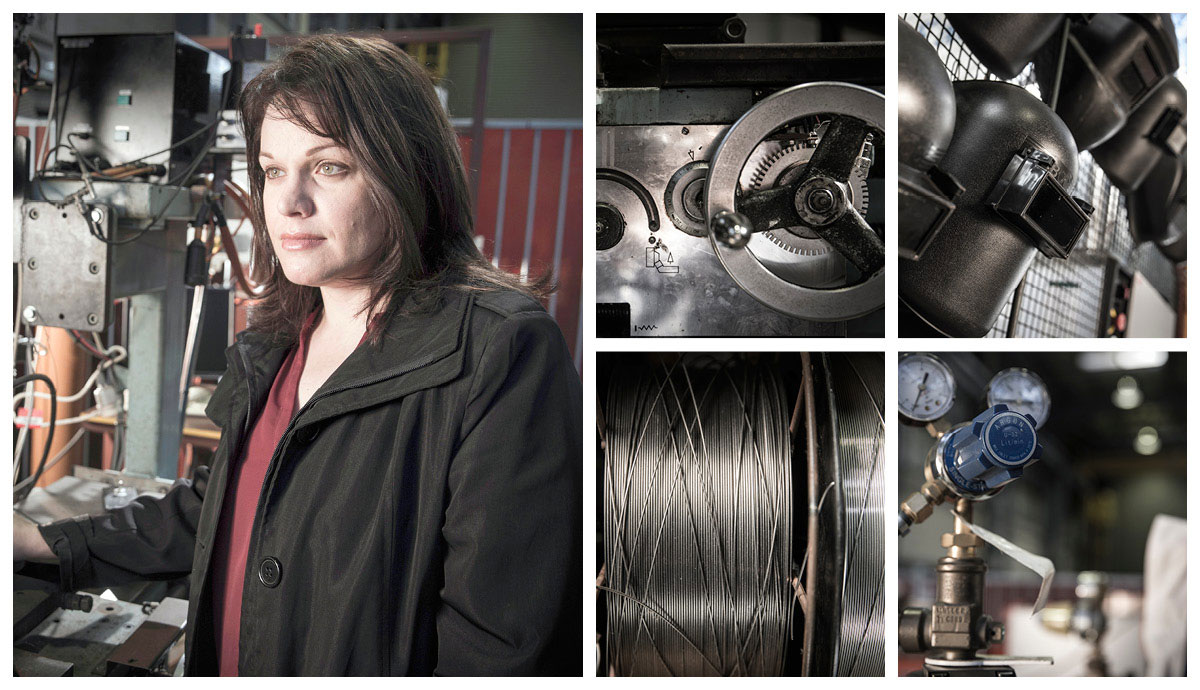August 19, 2015
Developing a cheaper and super strong titanium product
New ways of welding titanium could lead to cheaper and stronger materials for energy and transport infrastructure.
Speak of a lightweight, silver-grey material with an atomic number of 22 and Professor Madeleine Du Toit‘s eyes light up.
The Faculty of Engineering and Information Sciences (EIS) professor, who will speak at the second UOW Big Ideas Festival on 25 August, has spent the past 18 years of her career fascinated with metallurgical and welding engineering, with a particular focus on one metal: titanium.
Titanium can be alloyed with iron, aluminium, vanadium and molybdenum, among other elements to produce strong, lightweight alloys.
Professor Du Toit said the applications of titanium and its alloys are numerous. The aerospace industry is the largest user of titanium products, but it is also used in medical prostheses, orthopaedic implants, dental instruments and sporting goods.
“Titanium is widely recognised for its high strength, low density and excellent corrosion resistance. It’s used in all sorts of things, from the aerospace industry to golf clubs,” Professor Du Toit said.
While titanium is the fourth most abundant metal found on the planet, it is expensive because it is difficult to extract from its ores.
 "We believe our research will produce a cheaper to manufacture and more superior titanium product for worldwide use." - Professor Madeleine Du Toit.
"We believe our research will produce a cheaper to manufacture and more superior titanium product for worldwide use." - Professor Madeleine Du Toit.
Professor Du Toit said conventional welding techniques, as well as those used to build up parts by depositing weld metal layer-by-layer, lead to formation of coarse titanium grain structures that can reduce strength and toughness.
“The earlier research showed that using a normal welding process to build up a component led to a grain structure that is too coarse,” she said.
Professor Du Toit’s research has led her to add a special flux to the weld pool during the welding process. This helps to introduce grain-refining compounds across the area where the metals are being fused and prevents the formation of grain structures that weaken the joint.
“We are only at the beginning stages of these investigations into grain refinement in titanium alloy welds,” she said. “Ultimately we believe our research will produce a cheaper to manufacture and more superior titanium product for worldwide use.”
Titanium products can be manufactured using a number of methods. Methods that involve machining a part from a billet or block of titanium leads to increased material waste: one kilogram worth of parts made for the aerospace industry takes 11 kilograms of titanium with subtractive manufacturing.
Successfully developing a new welding technique would lead to manufacturing processes that are quicker and cheaper with very little material waste.
The Big Ideas Festival will be held on Tuesday 25 August from 5pm to 9pm at the UOW University Hall and will be live streamed.
Professor Madeleine du Toit biography
Madeleine du Toit is a Programme Leader in the Energy Pipelines CRC. She holds BEng, MEng and PhD degrees in Metallurgical Engineering from the University of Pretoria in South Africa and a Masters degree in Welding Engineering from the University of the Witwatersrand. She is a registered Professional Engineer in South Africa and a qualified International Welding Engineer. She served as President and member of Council of the Southern African Institute of Welding from 2010 to 2014, and as Chairperson of the Governing Board of SAIW Certification from 2005 to 2014. Madeleine is actively involved in the activities of the International Institute of Welding as part of the Australian delegation.
:format(jpg)/prod01/channel_3/assets/live-migration/www/images/content/groups/public/web/media/documents/mm/uow200611.jpg)